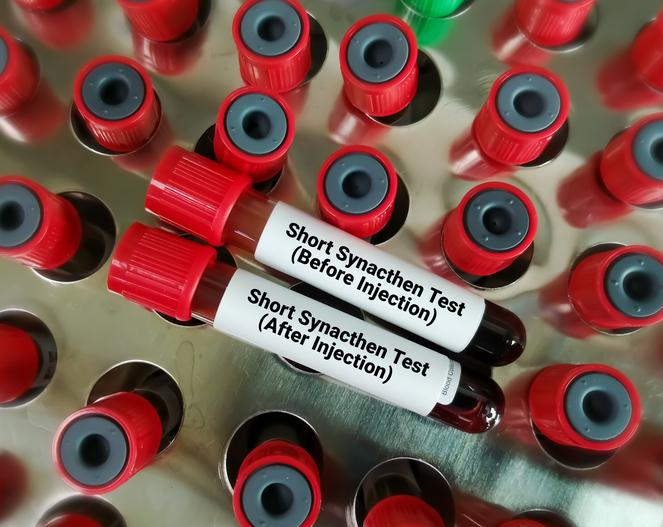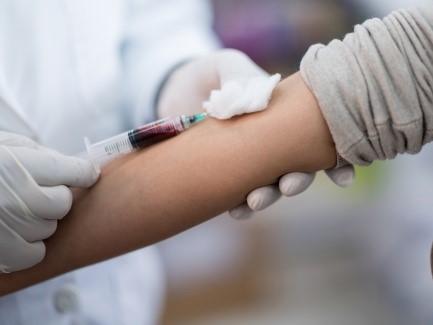Blood clotting tests
Peer reviewed by Dr Toni Hazell, MRCGPLast updated by Dr Hayley Willacy, FRCGP Last updated 13 Feb 2023
Meets Patient’s editorial guidelines
- DownloadDownload
- Share
- Language
- Discussion
Blood clotting tests are used to diagnose and assess bleeding problems and to monitor people who take warfarin or other anticoagulant medicines.
In this article:
You may be advised to have blood clotting tests:
If you have a suspected bleeding disorder. For example, if you bleed a lot after cuts, or if you bruise easily.
If you have certain liver diseases that can affect the making of blood clotting factors.
Before surgery, in certain circumstances, to assess your risk of bleeding problems during an operation.
If you develop a blood clot within a blood vessel for no apparent reason.
If you take anticoagulant medication such as warfarin (to check that you are taking the correct dose).
Continue reading below
How blood clotting is tested
There are a number of different tests. The ones chosen depend on the circumstances and the suspected problem. They include the following:
Blood count
A full blood count is a routine blood test that can count the number of red cells, white cells and platelets per millilitre of blood. It will detect a low level of platelets.
Bleeding time
In this test, a tiny cut is made in your earlobe or forearm and the time taken for the bleeding to stop is measured. It is normally 3-8 minutes.
General blood clotting tests
A blood sample is taken into a bottle that contains a chemical which prevents the blood from clotting. It is then analysed in the laboratory. There are a number of tests that may be done. For example, the 'prothrombin time' (PT) and the 'activated partial thromboplastin time' (APTT) are commonly done. These tests measure the time it takes for a blood clot to form after certain activating chemicals are added to the blood sample.
If the time taken is longer than for a normal blood sample, this means one or more clotting factors are absent or low. There are other similar tests where different chemicals are added to the blood sample. The aim is to identify which clotting factor or factors are low or absent.
Monitoring anticoagulants
If you take certain medicines called anticoagulants (medicines which reduce the chance of a blood clot forming), such as warfarin, then you may need careful monitoring. Too much of the medication may cause bleeding problems.
Too little medication may increase the chance that a clot may form. A measurement called the INR can monitor how much medicine (commonly warfarin) to take. Your INR is calculated by the laboratory using the PT mentioned above.
Your doctor or nurse will set a 'target' INR for you, depending on the reason why you are taking the medication. By checking your blood at regular intervals they can advise on how to adjust your dose of medicine to reach this target.
Some anticoagulant medicines such as rivaroxaban, apixaban and dabigatran, do not need the INR type of monitoring. You may however need monitoring of your weight and kidney function.
Specific blood clotting factors
The amount of various clotting factors (and anti-clotting factors) in the blood can be measured by various techniques. One or more of these tests may be done if a general blood clotting test identifies a problem with clotting. For example, the amount of factor VIII can be measured in a blood sample. (The level is very low or absent in people with haemophilia A.)
Platelet aggregation test
This measures the rate at which, and the extent to which, platelets form clumps (aggregate) after a chemical is added which stimulates aggregation. It tests the function of the platelets.
Tests to check if your blood clots too easily
If you have an unexplained blood clot within a normal blood vessel this is caused thrombophilia. You may have tests to investigate possible causes - for example, a blood test to check for 'factor V Leiden'. This is an abnormal form of factor V which tends to make the blood clot more readily than normal.
Other tests
Various conditions such as vitamin deficiencies, leukaemia, liver disorders, or infections may affect clotting. Therefore, in some cases other tests may be needed to find the cause of abnormal levels of platelets or clotting factors.
How does blood clot?
Within seconds of cutting a blood vessel, the damaged tissue causes platelets to become 'sticky' and clump together around the cut. These 'activated' platelets and the damaged tissue release chemicals. These chemicals then react with other chemicals and proteins in the plasma, called clotting factors. There are 13 known clotting factors which are called by their Roman numbers - factor I to factor XIII. Next to a cut a complex series of reactions involving these clotting factors then happens quickly. Each reaction triggers the next reaction. This is called a cascade.
The final step of this cascade of chemical reactions is to convert factor I (also called fibrinogen - a soluble protein) into thin strands of a solid protein called fibrin. The strands of fibrin form a meshwork and trap blood cells which form into a solid clot.
If a blood clot forms within a healthy blood vessel it can cause serious problems. So, there are also chemicals in the blood that prevent clots from forming and chemicals that 'dissolve' clots. There is balance between forming clots and preventing clots. Normally, unless a blood vessel is damaged or cut, the 'balance' tips in favour of preventing clots forming within blood vessels.
Continue reading below
What problems can occur?
Bleeding disorders
There are various conditions where you tend to bleed excessively if you damage or cut a blood vessel - for example:
Too few platelets (thrombocytopenia) - due to various causes.
Genetic conditions where you do not make one or more clotting factors. The most well known is haemophilia A which occurs in people who do not make factor VIII.
Lack of vitamin K, which can cause bleeding problems, as you need this vitamin to make certain clotting factors.
Liver disorders - these sometimes cause bleeding problems, as your liver makes most of the clotting factors.
Blood clotting disorders
Sometimes a blood clot forms within a blood vessel that has not been injured or cut - for example:
A blood clot that forms within an artery supplying blood to the heart or brain is the common cause of heart attack and stroke. The platelets become sticky and clump next to patches of fatty material (atheroma) in blood vessels and activate the clotting cascade.
Sluggish blood flow can make the blood clot more readily than usual. This is a factor in deep vein thrombosis (DVT) which is a blood clot that sometimes forms in a leg vein.
Certain conditions can make the blood clot more easily than usual, such as antiphospholipid syndrome or inherited thrombophilias.
Certain medicines can affect the blood clotting mechanism, or increase the amount of some clotting factors, which may result in the blood clotting more readily.
Liver disorders can sometimes cause clotting problems, as your liver makes some of the chemicals involved in preventing and dissolving clots.
Patient picks for Blood tests

Tests and investigations
Synacthen test
A synacthen test checks the function of the adrenal glands. It can help to see whether the adrenal glands are producing enough steroid hormone (cortisol). Note: the information below is a general guide only. The arrangements, and the way tests are performed, often vary between different hospitals. Always follow the instructions given by your doctor or local hospital.
by Dr Philippa Vincent, MRCGP

Tests and investigations
Blood tests
The main reasons to know your blood group are if you need to have a blood transfusion or if you are pregnant. You cannot request a blood test just to know your blood group on the NHS.
by Dr Hayley Willacy, FRCGP
Further reading and references
- Purpura; DermNet NZ
- Lab Tests Online® - UK
- Favaloro EJ, Negrini D; Machine learning and coagulation testing: the next big thing in hemostasis investigations? Clin Chem Lab Med. 2021 Mar 3;59(7):1177-1179. doi: 10.1515/cclm-2021-0216.
- Chan J, Michaelsen K, Estergreen JK, et al; Micro-mechanical blood clot testing using smartphones. Nat Commun. 2022 Feb 11;13(1):831. doi: 10.1038/s41467-022-28499-y.
Continue reading below
Article history
The information on this page is written and peer reviewed by qualified clinicians.
Next review due: 12 Feb 2028
13 Feb 2023 | Latest version

Ask, share, connect.
Browse discussions, ask questions, and share experiences across hundreds of health topics.

Feeling unwell?
Assess your symptoms online for free
Sign up to the Patient newsletter
Your weekly dose of clear, trustworthy health advice - written to help you feel informed, confident and in control.
By subscribing you accept our Privacy Policy. You can unsubscribe at any time. We never sell your data.